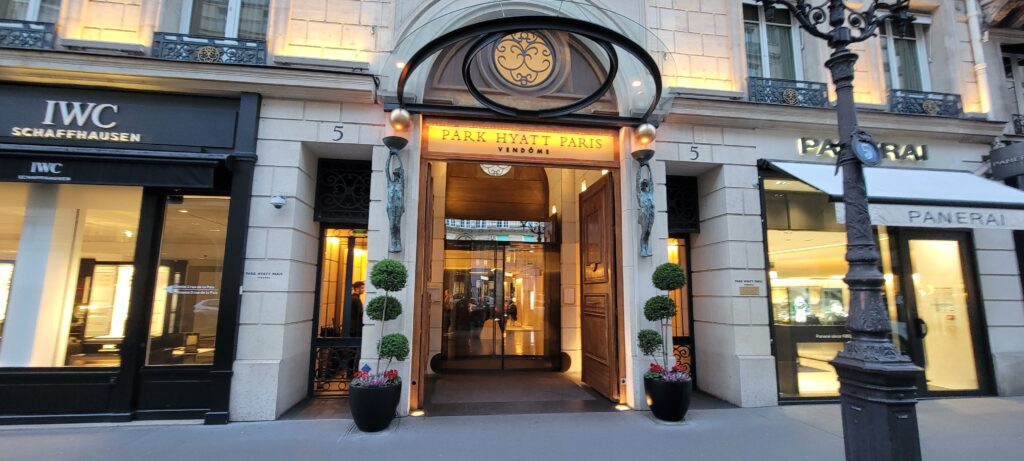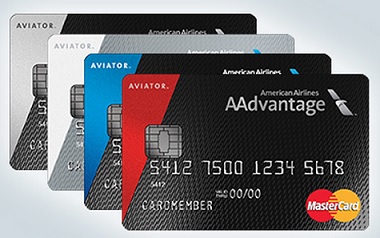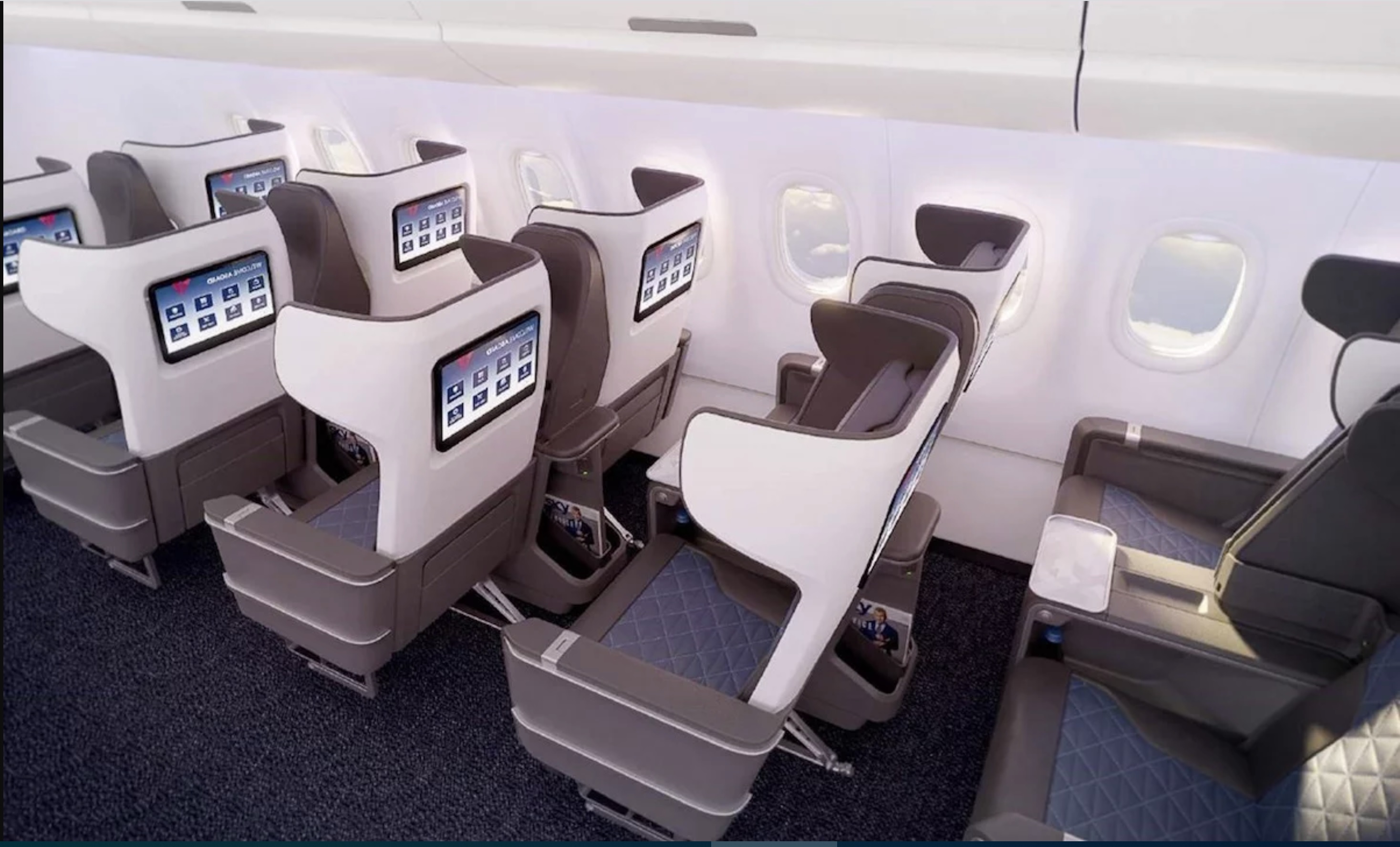I receive compensation for content and many links on this blog. Citibank is an advertising partner of this site, as is American Express, Chase, Barclays and Capital One. Any opinions expressed in this post are my own, and have not been reviewed, approved, or endorsed by my advertising partners. I do not write about all credit cards that are available -- instead focusing on miles, points, and cash back (and currencies that can be converted into the same). Terms apply to the offers and benefits listed on this page.
I’ve been pondering the new offer for the The World Of Hyatt Credit Card (See rates and fees) which includes double elite nights on stays through the end of this year (for 2026 status) and in January of next year (towards 2027 status).
This is a really interesting twist. We have seen credit cards count towards status. Hyatt was one of the first ones where ongoing spend with the card generated status credits. We haven’t seen limited-time accelerated status earning quite in this was as part of an initial bonus offer that I can recall.

Park Hyatt DC
It’s really innovative and I’d love to see the data on how this drives acquisition. I’d jump on the offer if I was close to earning Globalist for next year, or if I were shooting for 70, 80, or 90 night elite benefits (and beyond).
It makes me think of two things.
- Who is a card really for, and how does it make the cardmember better off than other products would? That’s the key to success.
- How can a card compete asymmetrically, so that it can deliver enough value to the customer to succeed while still being a profitable product to offer in the hypercompetitive rewards space?

Park Hyatt Paris
When banks call to pitch me on some great new product, I usually hear pablum like its ‘for millennials who value experiences over things.’ I immediately know that it’s a dud. The simple, defining question that I ask is: what consumer is made better off from this product, compared to everything else that’s already in the market? Meeting a real need that customers value is the surest way to success, and merely saying that the total addressable market is really big so having a product is a path to getting 1% of the market never works out the way you think it will because you never get 1% of the market
In 2018 I gave a talk for Mastercard at their annual cobrand partners conference. I was speaking to leadership from loyalty programs that offer Mastercards. I told them that there were two paths to getting consumers really excited about a credit card.
- They could outspend Chase’s proprietary rewards cards, which isn’t a path to profit
- Or they could look for ways to deliver asymmetric value – targeting their investment on the things that their customers cared the most about.

And there were really two ways of going about this targeting.
- Ride on the rails of the loyalty program the card is associated with, leaning into the program’s value proposition. That means doing more than just offering rewards points (a rebate). The most engaged members care about their experience with the brand, and the program addresses that at scale through its elite program.
- Hyper-targeting, with investment going to exactly the things customer want. They have spend data, and should be acquiring more, and using this data to personalize offers – too many programs personalize offers as a cost cut (chintzy offers, only to certain members, rather than broad expensive promotions) but they could take the full budget and use it only for things customers care about.
Not everyone wants another Priority Pass. Not everyone needs double points in every accelerator category. Create cards or offers that invest in bigger ways than competitors by not trying to offering everything and this works if the bigger investment matches the things that a customer segment cares about, and the places investment shifts away from those customers don’t care about.
I told the audience that the most extreme version of hyper-targeting would mean leveraging AI. This was more than four years before everyone smacked themselves on the forehead with the launch of ChatGPT. Delivering the right offer to the right customer at the right time involved knowledge of specific preferences as well as timing.
Very few people go searching Mastercard Priceless Experiences for the place they’ll be visiting on specific dates to see if there’s something they can add to their itinerary, and that’s probably a good thing because the better experiences don’t really scale. But what if instead of leaving it to the consumer to find something they didn’t know to be looking for, the brand, issuer, and payment network worked together to say ‘we know this customer will be traveling to this city at this time, and their purchase patterns tell us they live this cuisine and chef, and the chef is doing a private dinner while they’re there’ and they served up that specific offer to the customer? And what if those offers arrived at just the moment the customer cared about it?
It’s something they probably couldn’t buy for themselves, leveraging the power of their credit card for access. It would cement true emotional loyalty. But it’s also hard.
Far easier is just to lean in on the elite program, treating cardmembers as the valuable customers they are – their business is higher margin than purchasers of the travel product itself – so it makes sense to reward them with increasingly better treatment for their spend.

Before American and to a lesser extent Delta, United, and Alaska leaned into credit card earning towards status, I highlighted two programs that were actually doing this.
- Frontier Airlines. They don’t have as much to offer frequent customers as a legacy airline with its lounges, lie flat seats, and far-flung destinations (plus global partners), but they remove the pain points of travel for their most frequent customers and they were actually first with the idea that one dollar of spend on their card earned one point towards status. Everyone thought American AAdvantage was revolutionary with Loyalty Points, but Frontier led the way.
- Hyatt. Their 2018 co-brand refresh offered 2 elite qualifying nights for every $5,000 spent on the card, with a free night earned (in addition to points) after $15,000 spend. Equally important, they shifted the program to decouple many of its benefits from status tiers, rewarding members progressively for every 10 nights stayed (or, rather, elite nights earned). That meant there were incremental rewards for every $10,000 spent on the card – and this was uncapped. Hyatt even later increased rewards to offer more benefits at the 110, 120, 130, 140 and 150 night levels.

The idea was that the cards rode on the rails of the elite program that was already in place, and integrated into the program that the best acquisition targets already valued – with benefits they cared about.
We’ve seen a lot more of a move in this direction in the intervening years. I’ve been a bit surprised, though, that we haven’t seen more – some contribution towards status for spending on a card (and sometimes some qualifying points as part of an acquisition bonus), some priority in upgrade algorithms for cardmembers – but that’s largely been at the margin. So it’s a bit of a meaningful step for Hyatt, whose card initial bonus offers have been modest (these are generally among the most expensive points for partners to purchase), to offer double elite qualifying nights not to all members, or cardmembers generally, but as an acquisition tool. I wonder if we’ll see more of this.


Wild ride, Gary. I use your links when they match or exceed public best and P2 doesn’t have a referral. Got Citi Strata Elite recently. Thanks, bud.
On that one-liner above, you sure that a decade or two ago those banks weren’t pitching you on ‘pablum,’ like a card product ‘for boomers who value hoarding junk over experiences with their millennial children’…?
@1990. Glad your travel thoughts are being lead so well.
I’ve had the WoH card for years. Wondering if I’m getting double night credit too, as I have 13 nights booked for the rest of the year.
@Gary said:
“The simple, defining question that I ask is: what consumer is made better off from this product, compared to everything else that’s already in the market?”
“In 2018 I gave a talk for Mastercard at their annual cobrand partners conference. I was speaking to leadership from loyalty programs that offer Mastercards.”
Isn’t it incredibly odd that the people in charge of these programs have to be told that. Although it obviously isn’t so, one would think that in order to be put in charge of those programs, these executive would have years of experience and would know and understand the fundamental truths of their business.
It doesn’t take a consumer very long to figure out if he’s the target for, and the value to be extracted from, a particular card, so it’s amazing that loyalty executives, with their information overload, can’t figure it out.
I have lifetime status in many programs. What does a co-brand credit card do for me? Take Marriott low end card: basically I get some extra points that aren’t worth very much and are worth less and less every year. Status isn’t worth very much because Marriott hotels won’t honor the benefits. I get a 35,000 point free night. Good luck with that given massive ongoing constant devaluations. Will I keep my Marriott card? its getting hard to justify paying ever-increasing annual fees.
@Larry — I trust the thot leader!
Interesting take on things. Certainly you hit the nail on the head about Hyatt for me. I normally stay 30-40 nights a year with Hyatt and am pretty agreeable about spending my way to 60 or 70, even at one point per dollar on the card. Super smart marketing by Hyatt as long as there’s good value in WOH.
Other than acquisition cost value, this is exactly why a card like the AA Executive card is valuable while the Citi Strata Elite is not.
“We haven’t seen limited-time accelerated status earning quite in this was [sic] (presumably “way”) as part of an initial bonus offer that I can recall” and if you’d like to see even more interesting “data on how this drives acquisitions”, review the results of Chase Hyatt credit card initial bonus offer at the end of 2020 (COVID shutdowns).
At that time, Chase/Hyatt doubled the 5 annual qualifying nights for both 2020 AND 2021, AND Chase/Hyatt ended up crediting many new card holders 10 or 15 additional qualifying nights in the first week of January 2021. Hyatt is reported to have told new card holders they were entitled to 20 (automatic) qualifying nights at the start of the 2021 year.
AND at the same time, Hyatt ran a promotion whereby nights during the last 3 months of 2020 ALSO counted as qualifying nights for 2021. AND at the same time, Hyatt ran a promotion offering double qualifying nights from October until January 4 which was subsequently extended until February 28.
Understood that some of that was on Chase, and some of it was on Hyatt, would still be fascinating to see how that drove both credit card AND elite status acquisitions.
@Peter — For AA, it’s all about the LPs, and, other than everyday spend towards status, that Exec card’s 20K bonus at 50K and 90K is a huge help.
@1990 – it’s really a good program. The 20k LPs actually help people stay incentivized and move people up the ladder, plus they actually continue to incentivize spending! Latest promotion on the AA Exec is spend $4k get 4,000 bonus miles in each of November, December and January. Hit all 3 and an extra 4k bonus miles on top. So $12k spend for 16,000 bonus miles. It’s no panacea, but if you’re going to book AA travel anyway in the next 12 months (air or hotel), may as well do so in at least one of those months and get an extra 4,000 miles. Also Exec is doing $150 off $1000 1stDibs purchase (again may not be useful for many, but it’s something!). Keep the promotions coming.
Or… I can pay $595 for the Elite so I can get a $300 hotel credit (just what I need, right) and $200 AA credit and $200 weird car service credit and a few passes to lounges that hate taking passes? They have no Citi branded lounges. What segment of the market are they going for? I’m telling you, they were really trying to convert existing HNWIs that had private banking/citigold accounts with them, and dangling 1 year free or $X off, etc. But it’s not a compelling product and the uptake has been poor other than folks chasing SUBs and Year 1 value. And if the asymmetry you are chasing is people who go out to eat on the weekend, just falls flat. I’ll stick with the AA Exec and it’s 10x miles on AA hotels and actual AA lounge access, thank you very much…
But Hyatt clearly gets it as well. And they cross-link with AA. Best USA airline and hotel loyalty programs… (I won’t go so far as to call AA the best airline in the US though!)
Aren’t airline/hotel based credit cards running out of prospects? For those that that rarely travel (2-5 times a year) and have a solid credit score (750 and up) a cashback card makes more sense.
If you travel and presumably qualify you likely already have enough travel cards. While would you pay an annual fee for another card that would yield little benefit for you?